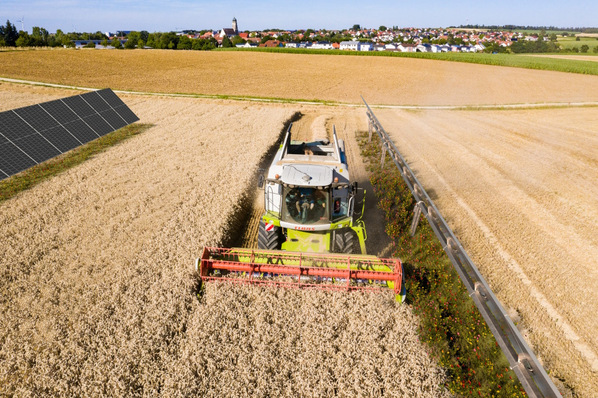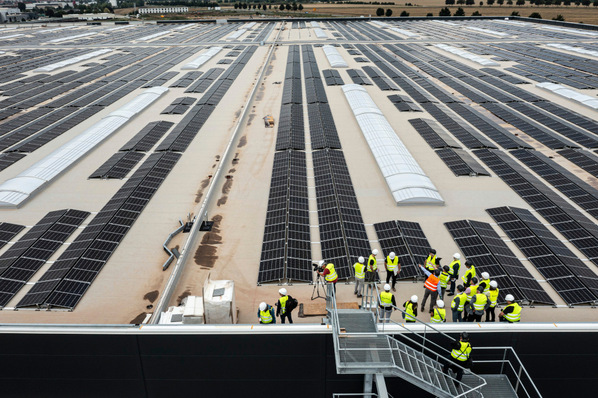With the Weesow-Willmersdorf project, EnBW is currently in the process of commissioning Germany’s biggest solar park step by step in the state of Brandenburg. At the same time, the company has already taken a decision to invest in the next two major projects, both of which are also in Brandenburg.
Subsidy-free PV projects with 500 MW
Work is set to begin on the “Gottesgabe” and “Alttrebin” solar parks at the start of 2021. Together with the Weesow-Willmersdorf subsidy-free PV project, the three parks will have a total capacity approaching some 500 megawatts, reinforcing the strategic importance of solar power as EnBW continues to expand its renewable energy portfolio.
50% renewable energy sources by 2025
Once an energy company that generated up to 80 per cent of its power by conventional means, EnBW wants to produce around half of its power using renewable energy sources by 2025. Besides onshore and offshore wind power, photovoltaic technology is now a key third pillar in the company’s expansion strategy for renewable energies. “In order to achieve the climate goals set for Germany, we need a clear, annually defined road map for the increase in renewable energy sources,” says Dirk Güsewell, head of generation portfolio development at EnBW.
The three solar parks will produce electricity for 140,000 households
“With solar energy, an annual increase of five to ten gigawatts would be necessary here. We can now make a significant contribution at a stroke with our three major projects.” Both projects, each with a capacity of around 150 megawatts, will be built in the district of Märkisch-Oderland, around 60 kilometres east of Berlin. Together with the 187-megawatt Weesow-Willmersdorf solar park, this will create a unique solar cluster in the wider region. The projects will result in the generation of environmentally friendly electricity for around 140,000 households, equivalent to around 70 per cent of all households in the Brandenburg districts of Barnim and Märkisch-Oderland.
Adding value in the local region
“What appeared to be unattainable just a few years ago has now become reality: Renewable electricity generation is possible without financial support from the German Renewable Energies Act (EEG). And this demonstrates that renewable energies can be competitive”, explains Jörg Steinbach, Minister for Economic Affairs, Labour and Energy in Brandenburg. “EnBW is contributing to the achievement of our energy and climate policy targets with projects such as the Weesow-Willmersdorf, Gottesgabe und Alttrebbin solar parks. Brandenburg is taking a leading role in the Energiewende because hardly any other German
state has pushed forward with the expansion of renewable energies so strongly.”
In addition, the Minister welcomed EnBW’s plan to issue contracts for some of the work involved in the project to companies based in the region. “This project is adding value in the local region, something which unfortunately does not happen in other projects.”
325,000 tonnes of CO2 saved thanks to solar energy
The three major photovoltaic projects that make up the solar cluster will save around 325,000 tonnes of CO2. EnBW wants to complete the construction work within a year, as it has done with the Weesow-Willmersdorf project, and commission both sites by the end of 2021. The company also wants to realise both of these projects without state funding. EnBW will sell the generated electricity via its own wholesale electricity trading market. All options will remain open here, whether in the form of Power Purchase Agreements (PPA) or by trading the electricity on the stock exchange or via its own sales portfolio.
Numerous conservation programmes that promote regional biodiversity are also part of the projects, as a study published by the Association of Energy Market Innovators (bne) shows. The construction site for all three projects, covering an area of around 400 hectares, will be fully greened with native seeds. In addition, trees, hedgerows and bushes will be planted in the immediate vicinity. (hcn)







